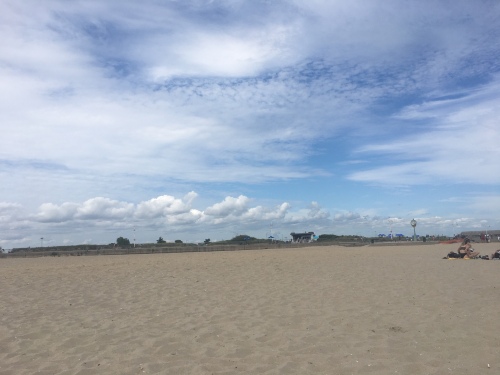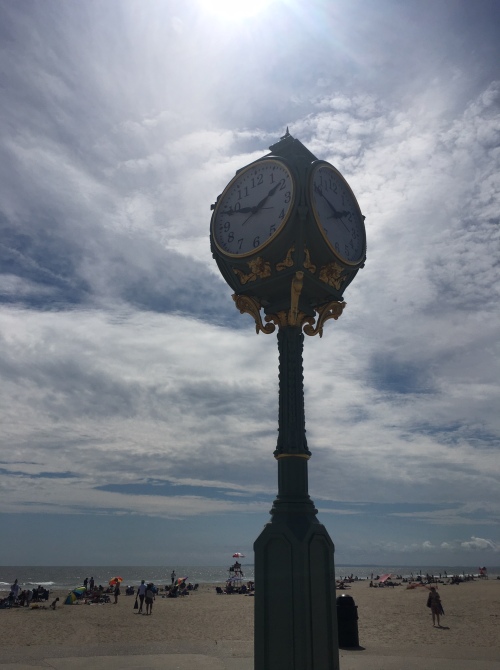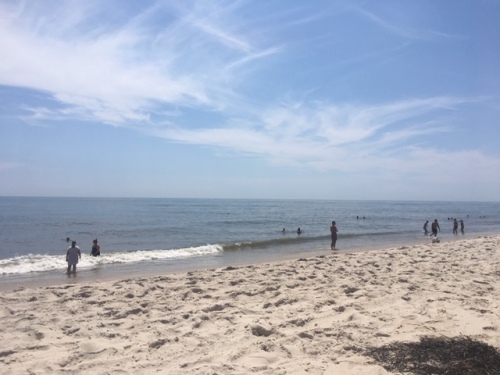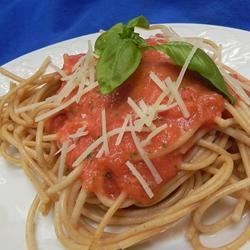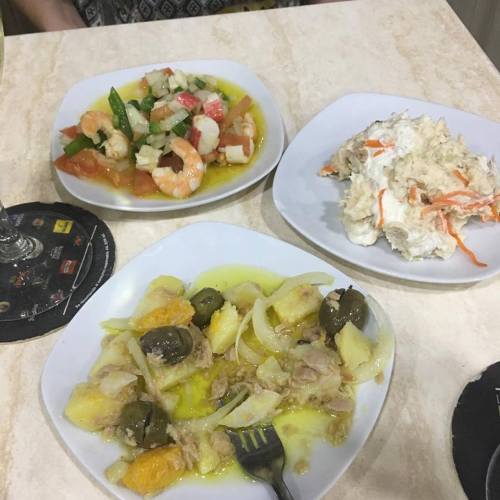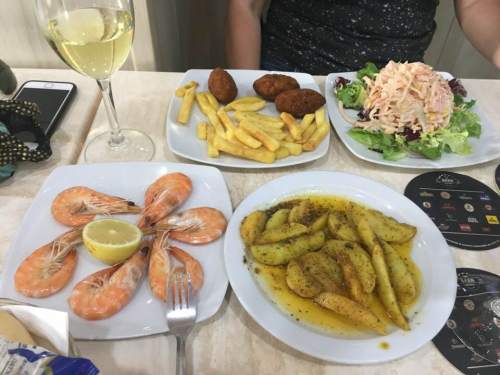
A table of Brazilian Petiscos
By Ernest Barteldes
I recently wrote two short articles on how enamored I am of the tapas culture of Spain, but to be true that nation does not hold a monopoly on small plates. Years ago I visited a restaurant in Little Italy (which has since closed) that also specialized in that, and there are several restaurants around this country that specialize on this kind of meal (yes, order enough of them and you’ll be full), and other cultures around the world have their own version of what is mostly recognized as “tapas.”
In Brazil, thanks to the strong influence of Portugal in its cuisine, small plates are also popular under the name “petiscos,” which is pretty much untranslatable since they are not necessarily “snacks,” as the dictionary would have it. Petiscos are small dishes that are commonly served to accompany drinks – alcoholic or not – and are usually leisurely enjoyed between meals at bars or even at home. They can go from simple chunks of cheese cut in squares with olive oil or grilled Calabrese sausage served with a side of farofa (spiced yucca flour) on to more elaborate treats like the Lebanese-inspired kibe (kibbeh).

Rollmops, common in Southern Brazil
Petiscos can vary a lot in Brazil depending on the region. For instance, in Curitiba they have one that is basically herring fillets served with pickles and onions – a clear influence of the large Polish-Brazilian community in the area, while in Sao Paulo boiled quail eggs in a ketchup dressing might be more common northeast you’ll find them made with more local ingredients – the Calabrese sausage gives way to frescal sausage cooked in a pit or fried yucca might be more prevalent than French fries since cassava is more available there than in other areas of the country due to the local climate.
As said before, petiscos are not part of a meal, but I have seen many Brazilians live on them during the weekend in lieu of dinner when out with friends at the bar. Non-drinkers enjoy them too as they are part of the local culture – you have to eat a bit when hanging out with friends, and since eating a big dinner is not exactly popular in most of the country (except if it’s a special occasion), you will easily find revelers enjoying them through the night with rounds of beer or caipirinha.

Fried Yucca
Fried Yucca (cassava)
(my recipe)
Ingredients: About 1-2 lb. of raw yucca (Goya has a frozen brand that does not need to be boiled, but I prefer using the fresh stuff)
Oil for frying
Salt to taste
Instructions:
Boil water in a large pan (a Dutch oven if you have one), and cut the fresh yucca (skip this if using frozen) to fit the pan. Boil the yucca in medium heat for about 20 minutes until the root is cooked but firm (cooking until soft will make frying impossible). Drain and let cool. Peel the yucca and quarter it, forming thick fry-like pieces.
Heat oil in a deep frying pan and fry the yucca until golden. Put on a plate with paper towels to soak up the oil. Serve hot with salt to taste.

Kibe (meat croquettes)
(source: The Spruce Eats)
These are a little labor-intensive but delicious. They can also be made with ground turkey or chicken if preferred.
Ingredients
1 cup bulgur wheat
1 1/2 cups beef broth (or water)
2 tablespoons olive oil 1 large onion (finely chopped, divided)
2 cloves garlic (minced)
1/2 teaspoon cinnamon
1/4 teaspoon nutmeg
2 pounds ground beef
1/3 cup parsley (chopped)
1/2 teaspoon salt (or to taste)
1/4 teaspoon black pepper (or to taste)
1/2 cup mint leaves (packed)
1 quart vegetable oil (for frying; or more as needed)
Garnish: lime wedges or tahini sauce
Instructions
Gather the ingredients. Place the bulgur wheat in a heatproof bowl. In a small pot, bring the beef broth or water to a boil. 04 Remove from heat and pour over the bulgur wheat. Let the wheat rest for 1/2 hour. Make the filling by placing 2 tablespoons olive oil in a skillet, and sauté half of the chopped onions, all of the minced garlic, all of the cinnamon, and all of the nutmeg. When onions are fragrant and soft, add 1/3 of the ground beef. Cook, stirring until the ground beef is well-browned. Stir in the parsley and cook 1 to 2 minutes more. Season with salt and pepper to taste. Set aside. Drain the bulgur wheat in a colander, pressing down on the wheat with the flat side of a spoon to press out all of the excess liquid. Place the bulgur wheat in the bowl of a food processor with the remaining (uncooked) ground beef, remaining raw onions, and mint leaves. Add 3/4 teaspoon salt and sprinkle generously with freshly ground black pepper. Process ground beef mixture until the mixture is very smooth, like a dough. If you have time to chill both the uncooked beef mixture and cooked filling for several hours, it will be easier to shape the kibe. Take golf ball-size balls of the uncooked beef mixture and press them flat into the palm of your hand. Place 1 tablespoon of the cooked beef mixture in the middle. Then close the “dough” around the filling and seal well. Shape the balls into elongated football-like ovals, with pointed ends. Place kibe on a baking sheet until ready to fry. 17 Heat several inches of oil in a deep pot to 350 F. Gently lower the kibe into the oil, working in batches, and cook until very dark brown and crispy. 19 Drain the kibe on paper towels. Serve kibe warm with lime wedges and tahini sauce for dipping
